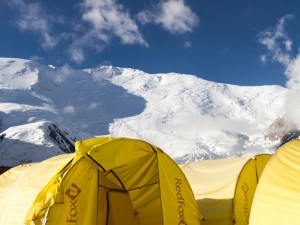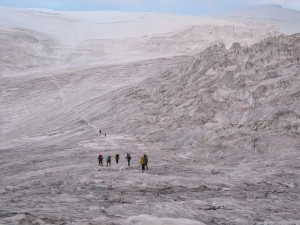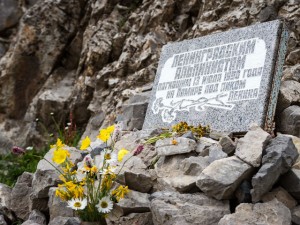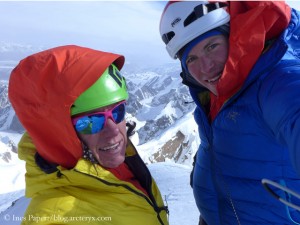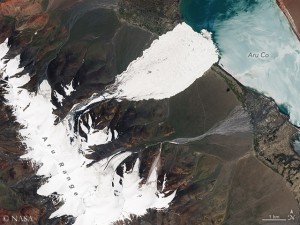Deadly accident on Peak Lenin
“There are no easy mountains and certainly no easy seven-thousanders.” I remember very clearly these words of my Austrian expedition leader Herbert Wolf in 2011, on the 7,246-meter-high Putha Hiunchuli (Dhaulagiri VII) in Nepal. I had to turn around 150 meters below the summit because the weather conditions were deteriorating and I was too late. What Herbert meant, was the fact that the conditions can change even an apparently easy mountain into a difficult and dangerous one.
Commercial expedition operators often call Peak Lenin in Kyrgyzstan an “easy seven-thousander” or an “entry seven-thousander”. On 7 August, a Russian mountain guide died on the 7,134-meter-high mountain in the Pamirs. It was a combination of difficult conditions and negligence that led to his death. Three other members of the expedition, which had been organized by a Kyrgyz agency, were lucky enough to survive the accident. I have first-hand information.
Without ice axe and helmet
Hundreds of climbers have been trying to climb Peak Lenin this season. Reports from various expeditions say that the weather conditions in recent weeks have been unusually bad: Heavy snowfall, wind and cold made the success rate on the mountain decrease from about 20 percent to two percent in July. “In the morning of 7 August, we were the first group to climb via the normal route from Camp 1 at 4,400 meters across the snow-covered and crevassed glacier to Camp 2 at 5,300 meters“, a member of the rope team of four told me. He survived the incident and wants to remain anonymous. According to his words, the Russian mountain guide was an experienced man who had already summited eight-thousanders. But apparently, he took the ascent across the glacier lightly. “He had neither a helmet nor an ice axe. He took a 40-meter rope, but insisted on paying out only 20 meters.” Later that proved fatal.
No chance to react
First they were able to jump across some narrow but deep crevasses. But then, at about 5,000 meters, the team reached a big crevasse, into which the wind had blown a lot of snow. “Due to the short rope distance between us, two climbers were simultaneously crossing the snow bridge when it broke”, said the climber. “It was happening so fast. We others were not able to react because of the short rope connection and were also pulled down into the 20- meter-deep crevasse.”
The Russian mountain guide hit the ground with his head forward and died on the spot. Another team member was hit by the guide’s crampons and suffered serious cut injuries. The fall of the other two climbers ended on the side of the crevasse, one injured his knee, the other miraculously remained intact.
Other rope teams realized that the group had suddenly disappeared in the crevasse. About two hours later, all were recovered from the crevasse and flown out by helicopter.
“Gross negligence”
“If we had used the full length of the rope – we repeatedly dunned the mountain guide for doing so –, only one team member would have stood on the snow bridge and in case it broke, we would had a chance to stop the fall”, said the expedition member, adding that the equipment with which the Russian mountain guide set off was insufficient for the prevailing conditions at Peak Lenin. This also applied to the food that had been deposited in the high camps. “That was gross negligence”, said the climber. “You should really look carefully under whose care you put yourself on such an expedition.”
Tragedies on Pik Lenin
Peak Lenin was first climbed by a Soviet-German expedition in 1928. The mountain was repeatedly the arena for tragedies. In 1974, eight Russian female climbers froze to death in a storm. In 1990, the mountaineering accident with the most fatalities ever occurred on Peak Lenin: An earthquake triggered an ice avalanche that buried a high camp completely. 43 climbers died, only two survived. So much for “easy seven-thousander”.



